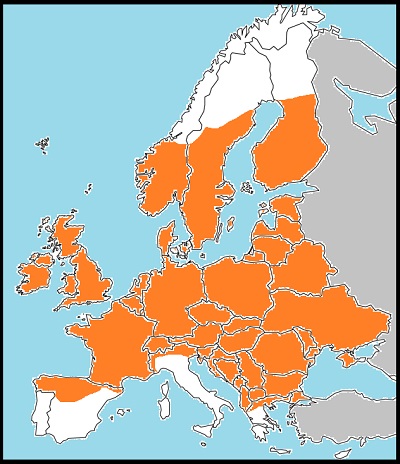
Female, Switzerland, July 2009

Male, Suffolk, UK, July 2020
Refresh page if pictures don't load fully:



Switzerland, July 2014



Switzerland, 2008

Switzerland, 2008

Switzerland, 2007

Males, Switzerland, 2007 - it is common for there to be no
visible spots on males

This picture is very old and I don't know where I took it.

Distribution
The ringlet - not closely
related to the many butterflies called 'ringlets' in the genus Erebia
- is a very common butterfly of bushy meadows and woodland throughout
most of Europe, absent only from the southern half of Iberia, most of
Italy and the far north. It usually appears in June, though may
sometimes be seen at the end of May, and flies through the summer in a
single generation. It may be seen from sea level up to about 1600m.
Males are predominantly sooty brown above, usually but not always with a series of somewhat obscure, yellow-ringed, white-pupilled eyespots on the forewings and hindwings. Females are similar, but a slightly warmer colour and with more conspicuous eyespots. Both sexes have a series of yellow-ringed, white-pupilled eyespots on the undersides, broken on the hindwing into groups of two and three spots. Only the rare false ringlet, Coenonympha oedippus, has a remotely similar pattern, but this is smaller, with a silvery marginal band outside the rings and a pale band inside them. There is no real risk of confusion.
Ringlets feed on a great
variety of
grasses and sedges, often using more than one species even at a single
site. Eggs are dropped in flight rather than laid, usually in shady
situations where the larvae will be protected from direct sunlight. The
caterpillars hibernate, completing their development in the spring.